A strategy to go beyond zero carbon

Yarra Valley Water has committed to go beyond zero carbon and set out a strategy on how to achieve this and maintain financial viability in doing so
DOWNLOAD THE PAPER
ABSTRACT
Our water industry has a proud history of leaving legacies for future generations. Some argue that the provision of sanitation has saved more lives that doctors. So what legacy will our generation leave for the future? Given that climate change is the defining issue of our times, and given the water-sector has a large direct and indirect impact on energy use and greenhouse gas emissions, we suggest that it should be a public utility that is “beyond zero carbon”. It is particularly important to the water industry because of the large adverse impact that climate change will have on the ability of utilities to provide water and sanitation services to their customers in an affordable way – hence it is both a visionary goal and directly in the general interest of utilities. The framing for change has now been well established with global, national, state, and city-specific commitments, including targets to be “carbon neutral” by 2050. What is yet to be defined, is the bridge from today to that future outcome. This paper provides a case study of how a water utility can go beyond zero carbon. A portfolio of examples is provided, grouped together under energy efficiency, renewable energy and carbon valuation, all framed within a business strategy. Importantly, this example from Yarra Valley Water (YVW) also highlights that it is possible for a water utility to go beyond zero carbon in a financially viable way.
KEYWORDS
Zero carbon, renewable energy, energy productivity, carbon abatement, greenhouse gas emissions
INTRODUCTION
‘Climate change is the defining issue of our time, and this is the defining time to act’, highlights António Guterres the Secretary-General of the United Nations (Guterres, 2018). Globally, we recognise this through the Paris Agreement of 2015, where 195 countries committed to keep temperature increases below 2 °C compared to pre-industrial levels, while pursuing to keep them under 1.5 °C.
Alarmingly, the United Nations Environment Program (2021) forecasts that our present trajectory will see the planet warming by 3 °C above pre-industrial levels by 2100.
For some time now it has been well understood that approximately 0.5-1% of Victoria’s GHG emissions relate to water supply and sewerage treatment by the State’s water utilities, while a further 7.5% are related to the use of water in residential, industrial and commercial premises largely for water heating (estimate based on Kenway et al 2015, Kenway et al 2016). This range is typical internationally, but it is also worth noting that many utilities have larger contributions to national greenhouse gas emissions (e.g., up to 2.3% of national primary energy consumption, Kenway et al 2019).
For Melbourne significant adverse impacts from climate change can include losing half of our catchments’ water yield within 50 years, at a time when our population is forecast to nearly double (DELWP, 2019). If we are to avoid the severest of such adverse future impacts, we need change.
The Victorian State Government (2020) recognises the importance of this, and the water industry has an important 2 role to play, given that it is responsible for the largest proportion of government emissions (contributing about 24 per cent of total State government emissions). The Government has accordingly established a framework for change, which includes adding emission reduction targets into each water company’s statement of obligations and requiring metropolitan water utilities to be at least net carbon neutral by 2030. While we all recognise the importance for change, we now face the challenge of bridging a forward looking commitment with present-day action. To this end we are accelerating our emissions reduction ambitions with the aim of reaching our net zero target by 2025. In the following years, we want to take a regenerative approach and go beyond zero carbon by reporting negative emissions, which will begin to redress past emissions. The need to balance this with affordability, to ensure that no one is left behind, must also be addressed. This article provides an example of how a water utility can achieve that and become a company that is beyond zero carbon. YVW has purposely chosen the term ‘beyond zero carbon’ instead of ‘beyond net zero carbon’ to emphasise the intent above theoretical definition. The intent is to reduce the creation of greenhouse gas molecules as much as possible, independently where they are generated, ahead of not worrying about them, and only offsetting them. Which, arguably, the term ‘net’ does not draw out.
Commensurate with the magnitude of the problem, committing to “beyond zero carbon” is an integral component of YVW’s 2030 Strategy. While at the highest level, YVW’s strategy is built around the three pillars of “customers, community and the environment”, the impact on its customers’ bills from greenhouse gas emissions, either as direct costs or externalities, bring all three together.
During the last financial year, 2020-21, YVW generated 22,226 tonnes of CO2-e. The largest comes from the treatment of sewage at our sewage treatment plants. A breakdown of where greenhouse gases are generated is shown in Figure 1.
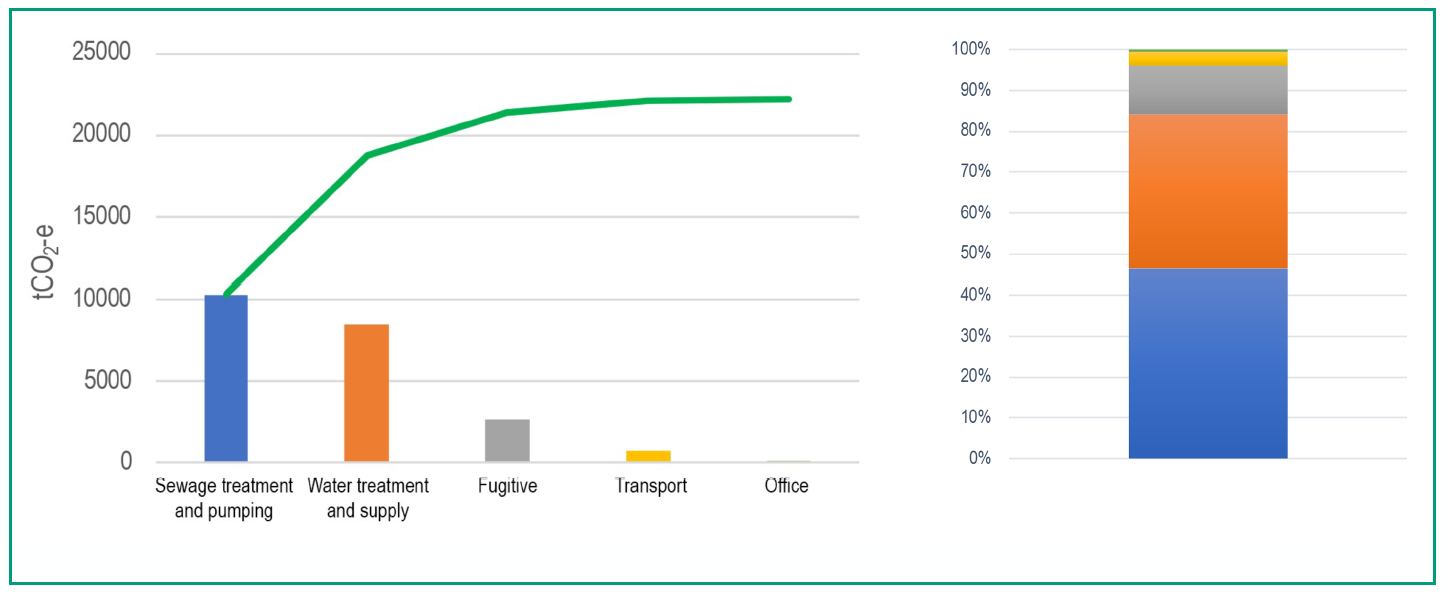
Figure 1. Breakdown of where Yarra Valley Water generated its greenhouse gas emissions in 2020-21
Cost savings will be delivered to YVW if it can generate all the energy it needs, reducing its current annual energy spend of approximately $5 million. Customer benefits will be achieved if we can reduce adverse future climate change scenarios, which at their worst would see YWV needing to source up to an extra 50% of its projected water supply, potentially adding more than 50% to customer bills.
YVW has committed to go beyond zero carbon, because it accepts responsibility for legacy greenhouse gas (GHG) emissions that have accumulated in the atmosphere from our past activities. Greenhouse gas emissions take many years to disappear. About 50% of CO2-e legacy emissions will be removed from the atmosphere within 30 years, and a further 30% will be removed within a few centuries. The remaining 20% may stay in the atmosphere for many thousands of years (EDF, 2008).
METHOD
Our program began with the emissions reduction hierarchy, Figure 2. From this we created three groupings to categorise our activities – energy productivity, renewable energy, and carbon abatement.
- Productivity to ‘Avoid and Reduce’ energy consumption and the subsequent emissions by ensuring it gets the most out of every unit of energy it consumes.
- Renewables to ‘Switch’ from carbon-intensive fuels and reduce its impact on the environment through lower emissions.
- Carbon Valuation to ‘Offset’ any remaining unavoidable emissions that it cannot avoid, reduce, or switch, and begin to redress legacy emissions.
MACC prioritises abatement opportunities based on their marginal abatement costs, while visualises the abatement potential of each opportunity. MACC has been applied in the water sector for communicating the economics of water related GHG emissions abatement (WSAA, 2012; Lam & van der Hoek, 2020). In this study, we mostly draw on inventory data from Deloitte Access Economics (2017), where 12 past initiatives at YVW have been evaluated for their average annual cost, and average annual emissions reduction. In the MACC, we only used ten of them (#1 to #12 except #2 and #3) because the other two have zero average annual cost (and therefore, zero marginal cost). We added two initiatives (i.e., efficient shower head program, hydrogen), based on our estimation of their average annual cost, and average cost of emissions abatement.
RESULTS
YVW will achieve its “beyond zero carbon” target by concentrating on three primary activities. It will target energy productivity to directly reduce emissions, use renewable energy to avoid indirect grid emissions, and use carbon abatement to offset any remaining emissions. A summary is shown in Figure 3.

Figure 2. Overview of Yarra Valley Water’s Beyond Zero Carbon strategy
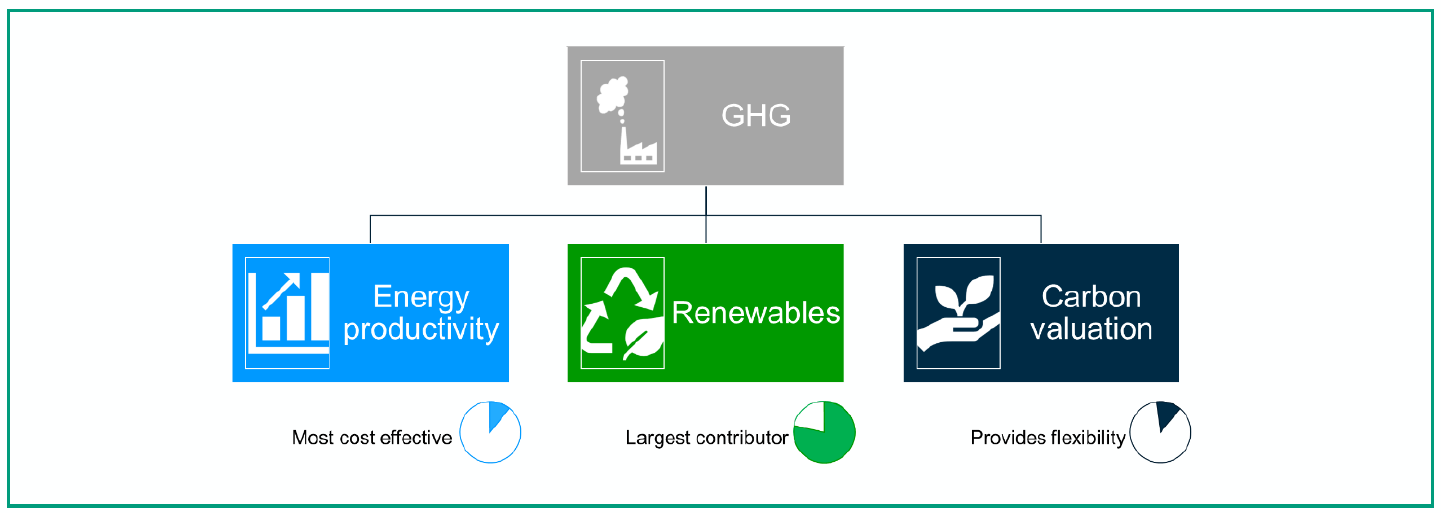
Figure 3: Overview of Yarra Valley Water’s Beyond Zero Carbon strategy
Energy productivity
Making sure it gets the most value out of every unit of energy it consumes through efficiency and optimisation is the most cost-effective way for YVW to reduce emissions. YVW believes it can reduce approximately 10% of its emissions, and consequently also its operational costs associated with energy purchases, through increased energy productivity measures. YVW is specifically targeting optimisation opportunities at its head office, treatment plants, and other mechanical and electrical assets.
Head office optimisation projects at YVW include assessing the vehicle fleet, installing electric vehicle charging stations (see Figure 4), load shifting, demand management, electrification, and further opportunities for solar panels and battery storage. Based on current data, after switching to 100% renewable electricity its vehicle fleet would represent 20% of the remaining emissions profile. By testing various vehicles as they become available, YVW will be able to identify which ones are fit-for-purpose (ie. suitable for field staff who often must travel off-road) and integrate them into the fleet accordingly. This provides YVW with a pathway to transition its vehicle fleet to either zero or low emissions technologies by preferencing where possible the purchase of either electric or hybrid-electric vehicles. YVW’s plan is to significantly reduce its vehicle-based emissions from 2025 and eliminate them by 2030.
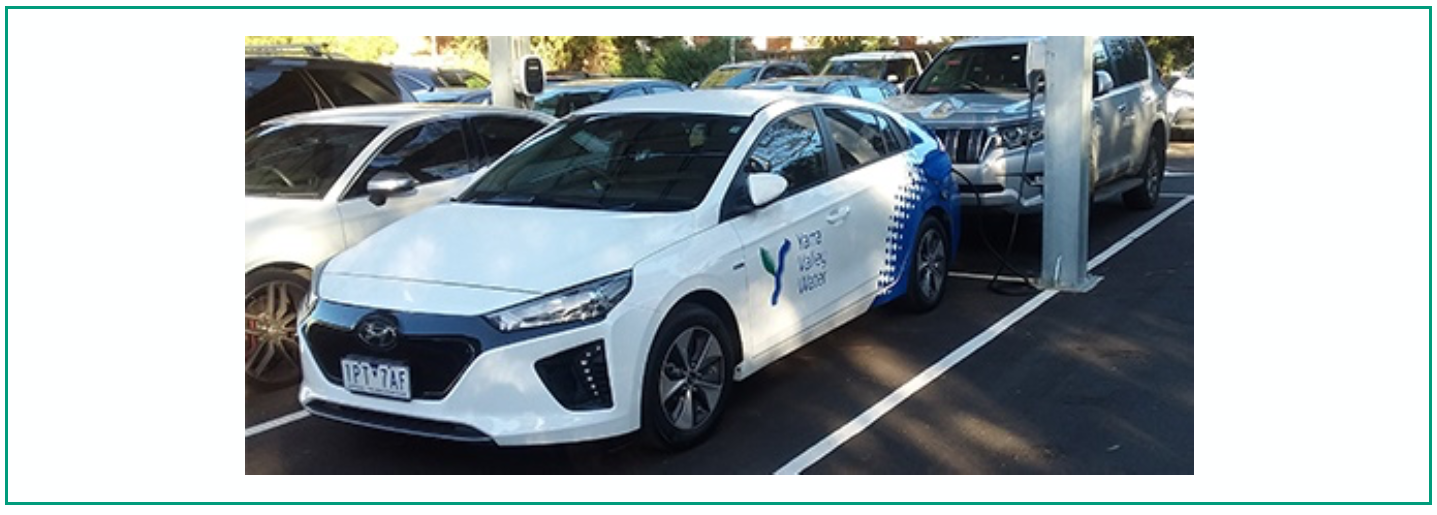
Figure 4: Fully electric vehicle being charged from the solar carport at Yarra Valley Water’s head office
At sewage treatment facilities YVW is working on installing sub-metering, energy productivity monitoring, and process efficiency improvements. Similarly, with other mechanical and electrical assets, YVW is working on efficient replacements in its asset management strategy, how it consumes future surplus renewable energy, and choosing gravity feed water networks when possible.
Energy productivity measures deliver cost effective emissions reductions. In the period FY2018-19 very low-cost process efficiency improvements implemented by empowered operators at its Brushy Creek Treatment Plant led to the site consuming 853 MWh less grid electricity compared to the previous year. This 21% reduction at one site reduced our total emissions profile by 913 tCO2-e, representing an overall 2.7% reduction for YVW.
Renewable energy
Given that 83% of YVW’s baseline GHG emissions are attributable to grid electricity use, this lever provides the biggest opportunity to reduce our current emissions profile. YVW are accordingly supporting internal and external projects that can replace carbon intensive energy sources. Our commitment is to generate 100 per cent of our own energy requirement from renewables by 2025. This includes all YVW owned assets (80% internal) and the Power Purchase Agreement with the Kiamal Solar Farm (20% external).
A summary of how YVW will achieve this is shown in Figure 5.
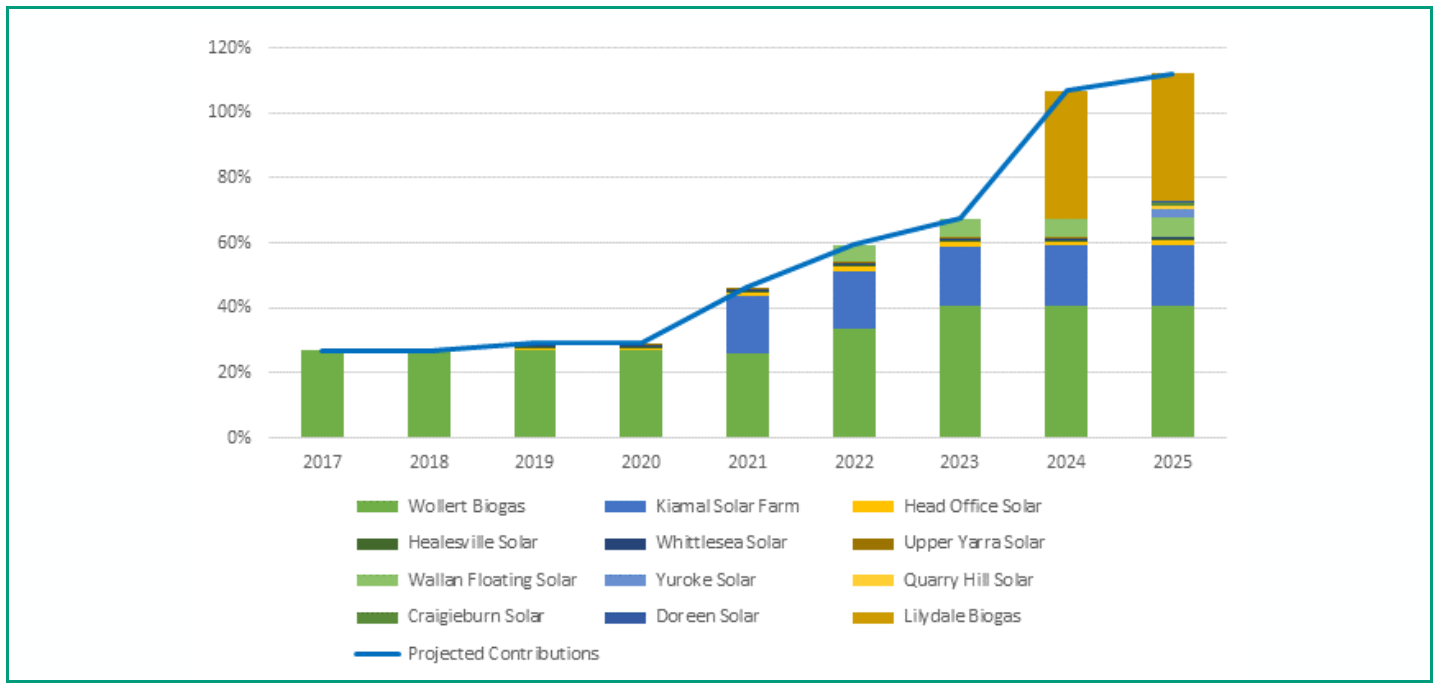 Figure 5: Strategy to generate 100% of energy requirement from renewables by 2025
Figure 5: Strategy to generate 100% of energy requirement from renewables by 2025
Three projects are making significant inroads into achieving YVW’s emissions reduction strategy objectives. These include solar generation, waste to energy, and green hydrogen generation.
YVW has installed 100kW solar (photovoltaic, PV) systems to supply 25% of the electricity requirement at its three sewage treatment plants and a 324kW solar PV system which supplies 30% of the electricity at its Mitcham office (see Figure 6). These projects have been sized to match the site electricity demands (during sunlight hours) and maximise behind-the-meter savings available with a payback period of 10 years or less. YVW has also entered into an agreement with 13 other Victorian water companies to support the development of a large-scale solar power station in north-west Victoria. This will provide a further 20% of our total energy requirement.
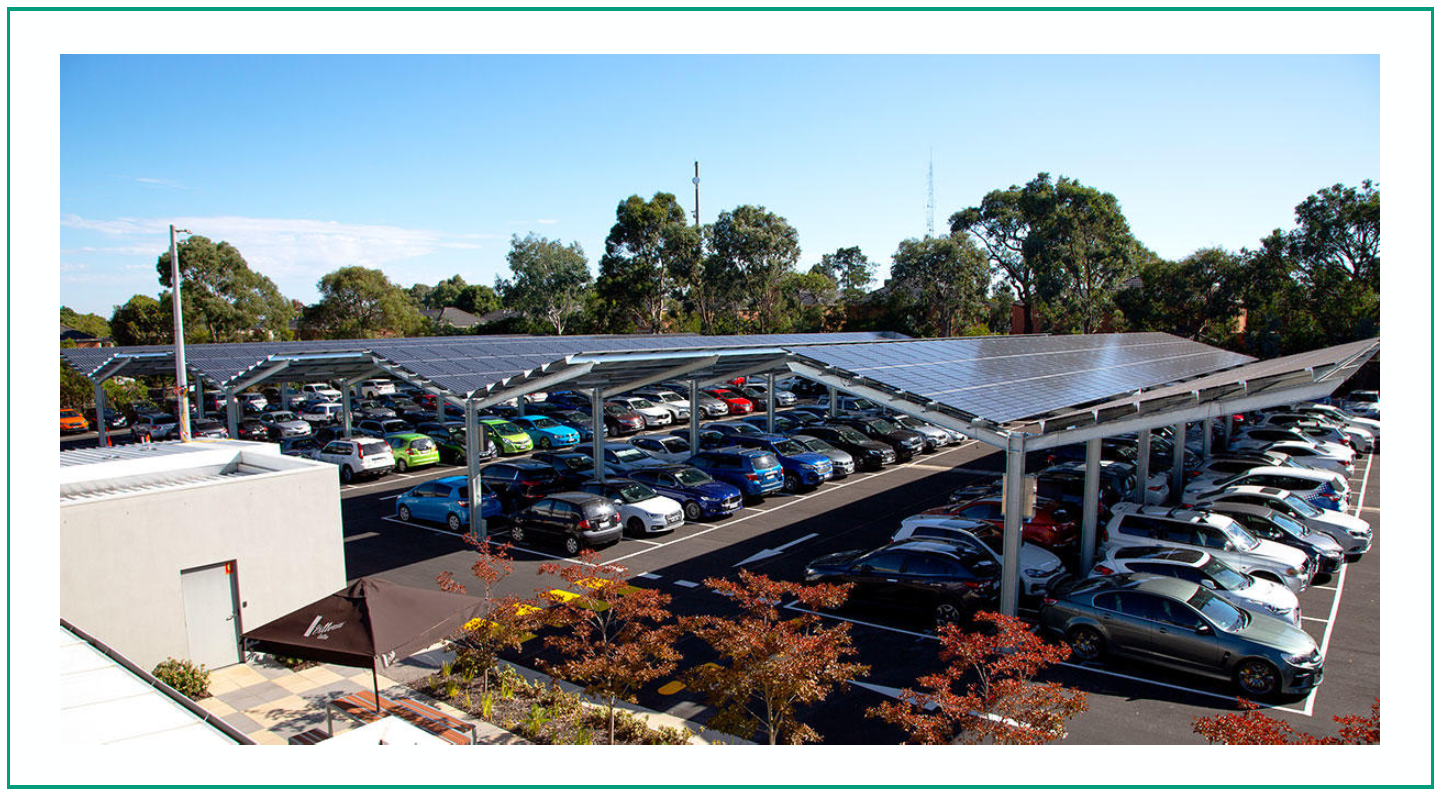
Figure 6: The 324-kW solar carpark was completed in early 2019
YVW has two further solar projects on the drawing board. YVW is about to install a 1,296 kW floating solar system at our Wallan Treatment Plant that will have the additional benefit of reducing algal growth in one lagoon (number 5) at that plant. The Class B water stored in the lagoon will be used as feedstock for the recycled water treatment plant, which in turn will increase the recycled water production capacity from the current 60% to 100% or greater into the future as demand for recycled water grows. YVW is also planning to develop concept designs for a further 1,333 kW of solar power across an additional five sites in its service area.
In 2017 YVW launched its first waste-to-energy facility at Wollert (see Figure 7). This facility is now operating at capacity and is processing 3,000 tonnes of food waste per month and generating on average 20.8 MWh per day of gross renewable electricity via 900kW output from a biogas powered generator. At present our facility is producing more biogas than we originally forecast and we are exploring how to increase the onsite generation to 1.5MW to consume the surplus biogas and produce up to 33 MWh per day of gross renewable electricity.
Of the current daily 20.8 MWh of renewable electricity generated at the Wollert waste-to-energy facility an average of 16.3 MWh or 78% is exported to the co-located Aurora Sewage Treatment Plant (STP). The STP then consumes 33% of this renewable electricity onsite before transferring the surplus 67% to other YVW treatment plants via the grid (National Energy Market, NEM).
Given the success of the first facility, YVW is now planning for a second 1.5MW facility at its Lilydale STP to produce up to 33 MWh per day of gross electricity. We expect these combined projects running near capacity will generate 75% or more of YVW’s current electricity demand, on average.

Figure 7: Digestor tank at Wollert waste to energy facility
Finally, YVW is in the early phases of assessing the technical viability of producing green hydrogen and oxygen from recycled water in a pilot plant at a sewage treatment facility. It is exploring the opportunity of increasing the efficiency of the treatment and disinfection processes by supplementing aeration of biological processes and sourcing pure oxygen for ozonation (eg. disinfection). Furthermore, YVW is looking at exploring options to supply local businesses with renewable hydrogen fuel for uses that could include, but are not limited to: stationary power generation, industrial applications, blending into the natural gas distribution network, and fuel for supporting mobility applications such as forklifts, buses and back-to-base truck movements. YVW thinks green hydrogen has a significant role to play in decarbonising the difficult parts of our economy, including the logistical transport sector and it is positioning itself as a business to supply this future market. Because it uses oxygen to treat sewage, combined with the recycled water and surplus renewable energy YVW produce, YVW is well placed to become a viable commercial scale producer in the new hydrogen economy. This would assist the Australian Government in achieving its “H2 Under 2” economic goal for it to compete with other energy sources.
Carbon valuation
Today’s greenhouse gas challenges exist because humans have changed the earth’s natural carbon cycle. We have moved carbon that existed historically as hydrocarbons in fossils and used them as fuels that emit carbon dioxide into the atmosphere. We have removed vegetation and drained wetlands to construct cities and the magnitude of change is now so large that it is impacting our Earth’s climate. Globally there are efforts to better understand the embedded carbon costs in activities that humans undertake.
Carbon abatement and sequestration is a process to restore the carbon cycle and we are investing in local projects beyond our emissions boundary that contribute to lowering atmospheric carbon emissions.
YVW have already built one waste-to-energy facility and have plans to build a second. These facilities abate carbon emissions by diverting organic waste from landfill and preventing the potent greenhouse gas methane from entering the atmosphere.
YVW are also co-investing with Melbourne Water and Greater Western Water in the Growing Carbon pilot project in the Port Phillip and Western Port region, which proposes to test small-scale biodiverse carbon plantings and sequester carbon from the atmosphere. YVW will share the learnings from these projects with participant organisations and the broader water and catchments sector to help others invest in similar projects.
Generating environmental certificates from these projects will store the value of abatement so it can be used to offset emissions elsewhere. We plan on accessing the trusted methodologies in the Emissions Reduction Fund (ERF) to validate the carbon reduction activities and produce Australian Carbon Credit Units (ACCUs). However, instead of selling our carbon abatement to the Federal Government, YVW will use the high value ACCUs to achieve its own greenhouse gas emission reduction targets.
YVW’s plan is to use the ACCUs to offset scope one emissions that occur from activities where it cannot reduce or avoid emissions, such as the release of fugitive emissions of methane and nitrous oxide that occur when we treat wastewater. YVW also plan on making voluntary surrenders of surplus ACCUs in excess of its carbon boundary to allow it to go beyond zero emissions and take a restorative approach and begin to redress legacy emissions.
Figure 8 illustrates YVW’s Existing Net Zero Pathway compared to an Accelerated Beyond Zero Pathway, including visual representations of the interventions it will make in Productivity, Renewables and Carbon (both Offset and Regenerative) to reach net zero in 2025, and go beyond zero in the following years.

Figure 8: Comparison of greenhouse gas emission targets and performance
DISCUSSION
A perceived hurdle to decarbonising the Australian economy is the perception that the associated projects are not financially viable. It is for that very reason that YVW thinks that its example is important to share with both the water industry, and the wider business community to highlight that it is possible to achieving a beyond zero carbon goal in an economically viable way.
YVW consider the use of a marginal abatement cost curve to be a tool that can offer insight to assist with compilation of a portfolio of initiatives with a view to achieving a beyond zero carbon emissions target. YVW have compiled a marginal abatement cost curve recording the cumulative reduction in GHG abatement potential on the horizontal axis, and the net present costs to achieve each initiate on the vertical axis. A negative cost displays a self-funding project, while when it becomes positive, it will rely on recovering the market cost of carbon to be viable, which presently in Victoria has Victorian Energy Efficiency Certificates valued at $33 per tonne of CO2-e. Once YVW abates over 35,000 tonnes of CO2-e per annum, it will move being “beyond zero carbon”.
A summary of how YVW will achieve its goal is illustrated in the marginal abatement cost curve, shown in Figure 9. Two key points from this figure can be highlighted. Firstly, the largest greenhouse gas reduction will be realised from an efficient showerhead program. It is, however, important to note that this is only viable when the financial analysis is undertaken at a city-wide scale, rather than just a water utility scale. At a city scale, it incorporates customer costs and benefits, rather than just considering costs and benefits to the utility only. The large potential benefit from the showerhead initiative is realised when one recognises that the Figure 9 only records the potential for a trial in the suburb of Reservoir that has a population of about 50,000. Adopting this across the whole of YVW could produce results that are tenfold larger. Secondly, the next largest greenhouse gas reduction potential exists with YVW’s second waste-to-energy facility being planned at Lilydale.
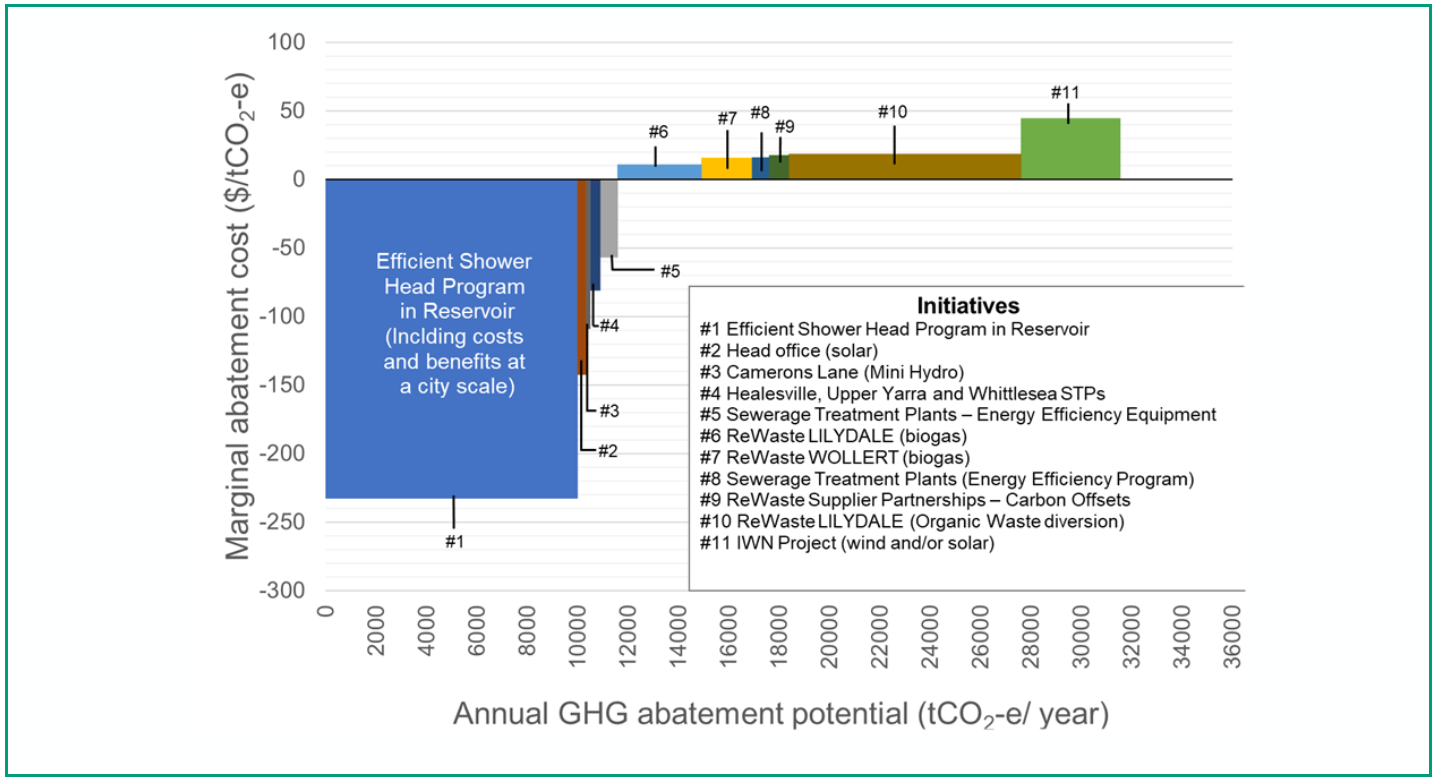
Figure 9: Marginal abatement cost curve showing how Yarra Valley Water will achieve its Beyond Zero Carbon commitment in a
financially viable way. (Bors et al 2021).
Interestingly, valuing carbon, and establishing an exchange methodology opens up many possibilities. The efficient showerhead program is one such example. It occurs because of the connection between household water use and energy use, Kenway et al (2016). For example, showers represent 31% of household water use (Siriwardene, 2020), and water heating accounts for 25% of household energy use (Australian and New Zealand Government, 2021). When all the costs associated with showering are taken into consideration, YVW estimate that an average household spends $540 a year on showering. This includes water use, energy use, and sewage disposal. Water use in showers across the YVW area presently averages 7.8 L/min (Siriwardene, 2020), while advances in technology now produce showerheads that use less than 5 L/min. YVW believes that if these showerheads were to be adopted across greater Melbourne, it could potentially reduce customer bills by up to $150 a year, reduce GHG emissions by 100,000 tonnes per year, and reduce water and energy demand by 10GL/year and 332GWh/year respectively. These water and energy savings are the equivalent of meeting the demand of a town of about 150,000 and 50,000 respectively. Accordingly, YVW supports research into exploring future possibilities to achieve such efficiency outcomes. The research is being undertaken by the Monash Sustainable Development Institute in conjunction with The University of Queensland.
CONCLUSIONS
Historically as a water industry legacy, it is the public health benefits from sewering cities like Melbourne in the early twentieth century that created the greatest public value in the last century. From that perspective, it might be asked: what will be the greatest legacy that the water industry leaves for the next century? In that respect, we argue that addressing climate change is the most important future challenge for the water sector. Therefore, YVW has committed to a strategy of going “beyond zero carbon” and invites all stakeholders to participate in becoming part of the legacy of that strategy.
ACKNOWLEDGMENTS
We thank Professor Steven Kenway and Lam Ka Leung from the University of Queensland for both sharing their unpublished research and contribution in producing this final paper.
REFERENCES
Australian and New Zealand Governments (2021) Hot Water Systems Discussion Paper: Comparative Technology Method for Evaluating the Performance of Hot Water Systems. E3. Equipment, Energy, Efficiency. (Accessed 9 August 2021)
https://www.energyrating.gov.au/sites/default/files/2021- 07/e3-hot-water-discussion-paper-comparative-technologymethod. pdf
Bors, J., Kenway, S., Satur, S., Skinner, R., Smith, L., Lam, K.L. (2021) Phase 1 Report: Drivers for energy reduction in the use of water in residential households - Opportunities. Melbourne, Australia: Monash Sustainable Development Institute and The University of Queensland, Monash University, April 2021. for the Department of Environment Land and Water Planning.
Deloitte Access Economics (2017) Water corporation emission reduction pledges. In, 127. Melbourne, VIC: Department of Environment, Land, Water and Planning. Department of Environment, Land, Water and Planning (DELWP) (2019) Victoria in Future 2019 Population Projections 2016 to 2056
Environmental Defence Fund (EDF) (2008) Greenhouse Gases: How Long Will They Last? Guterres António (2018)
https://www.un.org/sg/en/content/sg/statement/2018-09- 10/secretary-generals-remarks-climate-change-delivered (Accessed 31 March 2021).
Kenway, Steven J., Amanda Binks, Ruth Scheidegger, Hans-Peter Bader, Francis Pamminger, Paul Lant, and Thomas Taimre. 2016. 'Household analysis identifies waterrelated energy efficiency opportunities', Energy and Buildings, 131: 21-34.
Lam, K. L., van der Hoek J. P. (2020) Low-Carbon Urban Water Systems: Opportunities beyond Water and Wastewater Utilities? Environmental Science and Technology 54(23): 14854-14861.
Siriwardene N., Do J., Radion A., Westcott J. (2020) Where is water being used in Melbourne households? Residential End Use Measurement Study (REUMS) insights. Virtual presentation to the 1st Asia Pacific Conference on Sustainable Development of Energy, Water and Environment Systems – April 2020
United Nations Environment Program (2021) Making Peace with Nature. A scientific blueprint to tackle climate, biodiversity, and pollution emergencies.
Victorian State Government (2020) Climate change and the Victorian water sector. https://www.water.vic.gov.au/climatechange (Accessed 31 March 2021)
WSAA (2012) Cost of Carbon Abatement in the Australian Water Industry.
AUTHOR BIOGRAPHIES
Simon Prunster (email: Simon.Prunster@yvw.com.au) is the Energy and Emissions Specialist at Yarra Valley Water and is also a director at Zero Emissions Water. He has 15 years’ experience working in the energy and carbon space and is the architect of Yarra Valley Water’s beyond zero emissions and 100% renewable energy strategy.
Francis Pamminger (email: Francis.Pamminger@yvw.com.au) is the Manager of Strategic Research at Yarra Valley Water. He has over 40 years’ experience in the water industry. His contribution to the water industry has been recognised with two Research Excellence Awards (in 2008 and 2010) by the Sustainability Specialist Group of the International Water Association.
Glenn Wilson (email: glenn.wilson@yvw.com.au) is General Manager, Service Futures at Yarra Valley Water. He has over 20 years’ experience in the water industry and has held a range of roles across our engineering, business improvement and technology functions during that time.
